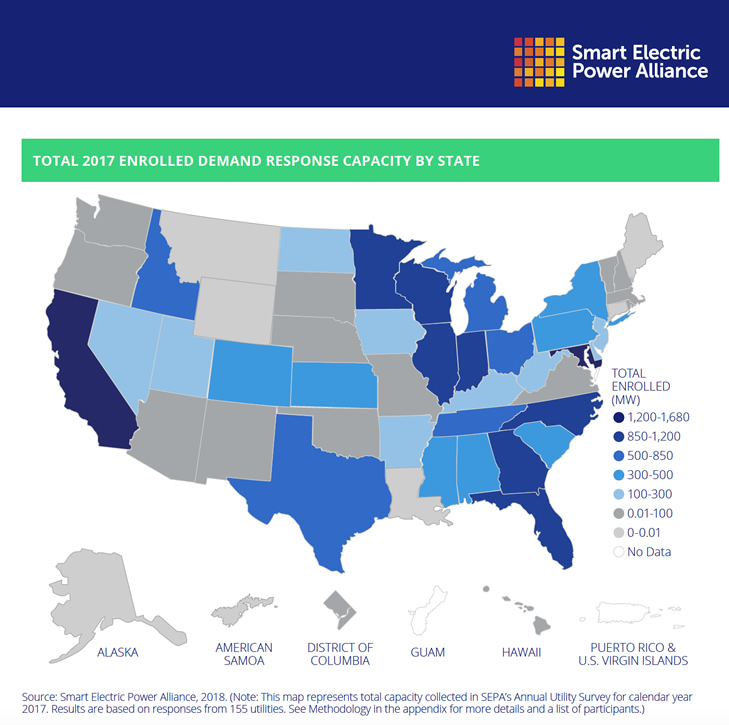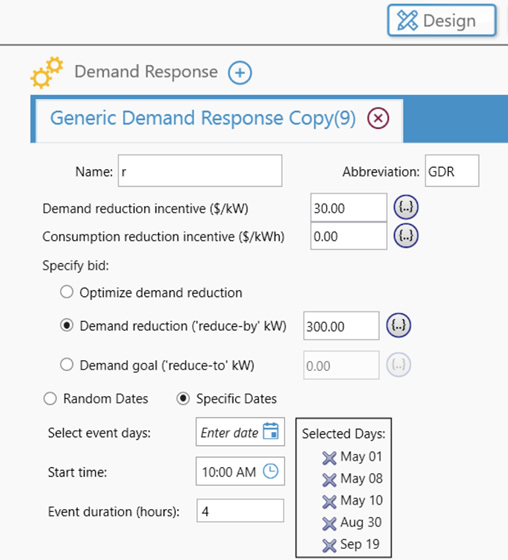Demand response programs are evolving to meet new kinds of load management challenges that utilities are facing. The evolution of distributed renewable energy resources, with their variable output and the new types of demand curves that they create, along with the closure of coal-fired power plants in many parts of the country, are prompting more utilities to implement demand response programs. Managing loads better by reducing the need for peak capacity can often be cheaper than upgrading transmission and distribution systems or investing in new generation resources just to handle peak loads.

The Smart Electric Power Alliance (SEPA), a trade group that works to help utilities deploy more distributed renewable energy, has been tracking demand response programs for over seven years. SEPA reports that in 2017 there were 155 demand response programs from utilities across the country, and that represents continuing growth for this strategy.
As more utilities implement demand response, that is creating new value propositions for their customers, particularly large commercial and industrial (C&I) electricity users. If a commercial customer has already developed a distributed generation system, particularly a CHP or solar + storage system, to cut peak demand charges, why not use that same system to make some money from utility demand response programs?
As a result of the growing number of demand response opportunities, HOMER Energy is upgrading HOMER Grid, our primary tool for designing behind-the-meter distributed energy systems. Next month our customers will be able to model the additional financial benefits of participating in demand response programs. In this article we’ll explain a bit about how demand response is evolving, and what the opportunities are.

Demand response is becoming more varied and sophisticated
Demand response was originally developed as an emergency program that utilities could use if they faced an unplanned outage of a major resource. Instead of having to commission a brand new “peaking” power plant that might sit idle most of the time, utilities realized they could prevail upon their customers to take steps that would reduce peak loads. In the past, that often took the form of temporary energy conservation measures among a few large, industrial customers.
Now there are multiple, increasingly sophisticated ways for customers to help utilities manage their electric loads, enabled by information technology and smart electronics. Demand can now be responsive with distributed generation and through strategies such as using storage to shift loads. In some cases, demand response is automated, whereby utilities send an electronic signal to customers to trigger the response; in other cases, customers – often large commercial (C&I) electricity users – will get a warning that their participation is requested on a certain date, and they can respond manually. In addition to using a distributed generation system to supply more of their own power, commercial and industrial customers, who make up the bulk of demand response contracts, can react by powering down energy-intensive machinery, changing a thermostat setting or even shutting off non-critical loads.
HOMER Grid is designed to help customers reap savings from demand response
We’ve added demand response to HOMER Grid because C&I customers who are already modeling distributed energy systems in order to cut their demand charges may be able to benefit financially from demand response programs as well. It depends on what, if any, demand response programs their utilities provide.

The new demand response module in HOMER Grid allows users to input multiple dates, and assuming they have advance warning of when peak reduction services will be required, which is often the case, they can model reductions for those dates. HOMER Grid will make calculations that take into account seasonal differences in temperature and insolation, as well as load reduction and payments from the utility.
HOMER Grid allows users to specify both critical loads that must never be interrupted, and another load that could be reduced during a demand response event.
Demand response is moving away from helping utilities deal with infrequent system emergencies and becoming an important tool for managing the grid and reducing costs, especially as more variable generation is installed. As such, it’s evolving as a key financial tool, and an opportunity for investors in distributed energy systems.
